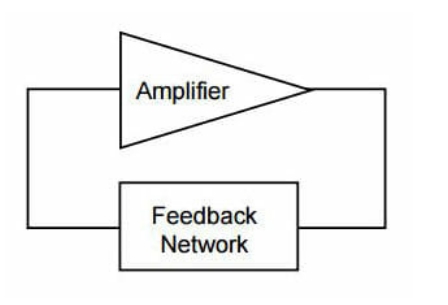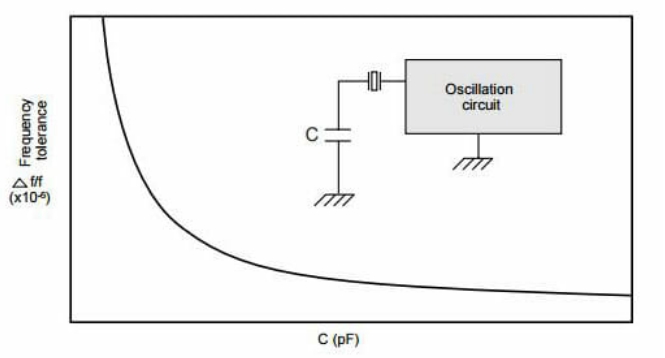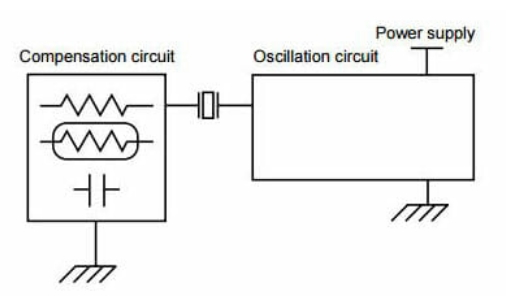ECS时钟晶体振荡器ECS-3953M-080-B-TR适用于6G光通信,ECS公司从默默无名小型企业到如今知名品牌,一路走来倾尽无数的风雨,通过自身的努力实现自我的价值,秉持着创新的设计理念,以及独特化的见解,为行业持续贡献自我的价值,以满足各个领域的需求,随着自身的切合实际情况进行深入探究,发现品质过硬的产品,永远是市场的最大需求,与此同时发布时钟晶体振荡器编码ECS-3953M-080-B-TR,型号ECS-3953M,尺寸为7.50mmx5.00mm,频率为8MHZ,ECS- 3951m (5V)和ECS 3953M (3.3V)系列是微型、晶体控制、小电流时钟振荡器陶瓷SMD封装。包装与金属盖接缝焊接。低姿态的包是理想的今天的先进便携式PC和仪表设计。
产品特性:3.3或5.0V版本,低功耗,待机功能,缝焊封装,磁带和卷轴(1,000个),符合PbFree/RoHS标准.
ECS Inc .坚信,无论所用产品的质量如何,任何应用程序都取决于其设计。ECS Inc .提供一些业界最好的频率控制电子元件和石英晶体产品,它知道这些产品只是一个更大难题的开始。
The purpose of these application notes is to help customers in specifying clock oscillators. Background information about the type of oscillators offered by ECS is included along with some common definitions and helpful formulas. The ECS oscillator product line consists of clock oscillators, TCXOs, VCXOs, VCTCXOs, and VCOs.
| Manufacturer Part Number原厂代码 | Manufacturer品牌 | Series型号 | Frequency 频率 | Operating Temperature 工作温度 |
| ECS-2333-160-BN-TR | ECS振荡器 | ECS-2333 | 16MHz | -40°C ~ 85°C |
| ECS-2333-160-BN-TR | ECS振荡器 | ECS-2333 | 16MHz | -40°C ~ 85°C |
| ECS-3953M-400-B-TR | ECS振荡器 | ECS-3953M | 40MHz | -10°C ~ 70°C |
| ECS-3953M-400-B-TR | ECS振荡器 | ECS-3953M | 40MHz | -10°C ~ 70°C |
| ECS-3953M-400-B-TR | ECS振荡器 | ECS-3953M | 40MHz | -10°C ~ 70°C |
| ECS-3953M-500-B-TR | ECS振荡器 | ECS-3953M | 50MHz | -10°C ~ 70°C |
| ECS-3953M-500-B-TR | ECS振荡器 | ECS-3953M | 50MHz | -10°C ~ 70°C |
| ECS-3953M-500-B-TR | ECS振荡器 | ECS-3953M | 50MHz | -10°C ~ 70°C |
| ECS-3953M-480-B-TR | ECS振荡器 | ECS-3953M | 48MHz | -10°C ~ 70°C |
| ECS-3953M-480-B-TR | ECS振荡器 | ECS-3953M | 48MHz | -10°C ~ 70°C |
| ECS-3953M-480-B-TR | ECS振荡器 | ECS-3953M | 48MHz | -10°C ~ 70°C |
| ECS-3953M-250-B-TR | ECS振荡器 | ECS-3953M | 25MHz | -10°C ~ 70°C |
| ECS-3953M-250-B-TR | ECS振荡器 | ECS-3953M | 25MHz | -10°C ~ 70°C |
| ECS-3953M-250-B-TR | ECS振荡器 | ECS-3953M | 25MHz | -10°C ~ 70°C |
| ECS-3953M-080-B-TR | ECS振荡器 | ECS-3953M | 8MHz | -10°C ~ 70°C |
| ECS-3953M-080-B-TR | ECS振荡器 | ECS-3953M | 8MHz | -10°C ~ 70°C |
| ECS-3953M-080-B-TR | ECS振荡器 | ECS-3953M | 8MHz | -10°C ~ 70°C |
| ECS-3953M-100-B-TR | ECS振荡器 | ECS-3953M | 10MHz | -10°C ~ 70°C |
| ECS-3953M-100-B-TR | ECS振荡器 | ECS-3953M | 10MHz | -10°C ~ 70°C |
| ECS-3953M-100-B-TR | ECS振荡器 | ECS-3953M | 10MHz | -10°C ~ 70°C |
| ECS-3953M-240-B-TR | ECS振荡器 | ECS-3953M | 24MHz | -10°C ~ 70°C |
| ECS-3953M-240-B-TR | ECS振荡器 | ECS-3953M | 24MHz | -10°C ~ 70°C |
| ECS-3953M-240-B-TR | ECS振荡器 | ECS-3953M | 24MHz | -10°C ~ 70°C |
| ECS-3953M-500-BN-TR | ECS振荡器 | ECS-3953M-BN | 50MHz | -40°C ~ 85°C |
| ECS-3953M-500-BN-TR | ECS振荡器 | ECS-3953M-BN | 50MHz | -40°C ~ 85°C |
| ECS-3953M-500-BN-TR | ECS振荡器 | ECS-3953M-BN | 50MHz | -40°C ~ 85°C |
| ECS-3953M-040-BN-TR | ECS晶振 | ECS-3953M-BN | 4MHz | -40°C ~ 85°C |
| ECS-3953M-040-BN-TR | ECS振荡器 | ECS-3953M-BN | 4MHz | -40°C ~ 85°C |
| ECS-3953M-040-BN-TR | ECS振荡器 | ECS-3953M-BN | 4MHz | -40°C ~ 85°C |
| ECS-3953M-018-BN-TR | ECS振荡器 | ECS-3953M-BN | 1.8432MHz | -40°C ~ 85°C |
| ECS-3953M-018-BN-TR | ECS振荡器 | ECS-3953M-BN | 1.8432MHz | -40°C ~ 85°C |
| ECS-3953M-018-BN-TR | ECS振荡器 | ECS-3953M-BN | 1.8432MHz | -40°C ~ 85°C |
| ECS-3953M-200-BN-TR | ECS振荡器 | ECS-3953M-BN | 20MHz | -40°C ~ 85°C |
| ECS-3953M-200-BN-TR | ECS振荡器 | ECS-3953M-BN | 20MHz | -40°C ~ 85°C |
| ECS-3953M-200-BN-TR | ECS振荡器 | ECS-3953M-BN | 20MHz | -40°C ~ 85°C |
| ECS-3953M-480-AU-TR | ECS振荡器 | ECS-3953M-AU | 48MHz | -55°C ~ 125°C |
| ECS-3953M-480-AU-TR | ECS振荡器 | ECS-3953M-AU | 48MHz | -55°C ~ 125°C |
| ECS-3953M-480-AU-TR | ECS振荡器 | ECS-3953M-AU | 48MHz | -55°C ~ 125°C |
| ECS-3963-080-BN-TR | ECS振荡器 | ECS-3963-BN | 8MHz | -40°C ~ 85°C |
| ECS-3963-080-BN-TR | ECS振荡器 | ECS-3963-BN | 8MHz | -40°C ~ 85°C |
| ECS-3963-080-BN-TR | ECS振荡器 | ECS-3963-BN | 8MHz | -40°C ~ 85°C |
| ECS-3961-040-AU-TR | ECS振荡器 | ECS-3961 | 4MHz | -55°C ~ 125°C |
| ECS-3961-040-AU-TR | ECS振荡器 | ECS-3961 | 4MHz | -55°C ~ 125°C |
| ECS-3961-040-AU-TR | ECS振荡器 | ECS-3961 | 4MHz | -55°C ~ 125°C |
| ECS-3963-250-BN-TR | ECS振荡器 | ECS-3963-BN | 25MHz | -40°C ~ 85°C |
| ECS-3963-250-BN-TR | ECS振荡器 | ECS-3963-BN | 25MHz | -40°C ~ 85°C |
| ECS-3963-250-BN-TR | ECS振荡器 | ECS-3963-BN | 25MHz | -40°C ~ 85°C |
| ECS-3961-200-AU-TR | ECS振荡器 | ECS-3961 | 20MHz | -55°C ~ 125°C |
| ECS-3961-200-AU-TR | ECS振荡器 | ECS-3961 | 20MHz | -55°C ~ 125°C |
| ECS-3961-200-AU-TR | ECS振荡器 | ECS-3961 | 20MHz | -55°C ~ 125°C |
The standard clock oscillator is the most common type of oscillator used and has applications in virtually every aspect of the electronics industry. The clock oscillator is used to establish a reference frequency used for timing purposes. A typical application is the sequencing of events in a computer.
A crystal controlled clock oscillator typically consists of an amplifier and a feedback network that selects a part of the amplifier output and returns it to the amplifier input. A simplified block diagram of such a circuit is shown below in (Fig 1).
Figure 1) Simplified Block Diagram of a Crystal Controlled Clock Oscillator
The basic criteria for oscillation in an oscillator are: 1. The open loop gain must be greater than the losses around the oscillator loop and 2. The phase shift around the oscillator loop must be either 0 or 360 degrees.
An oscillator can be used to generate different types of waveforms. The most common types of waveforms produced by an oscillator are sinusoidal and square.
The main parameters used in specifying a clock oscillator are listed below.
Logic TTL, HCMOS: In general, an HCMOS oscillator with drive TTL circuitry (not vice versa). The industry is moving away from the TTL logic as IC manufacturers are discontinuing the supply for many common TTL IC’s. Most ECS clock oscillators are HCMOS/TTL compatible.
Frequency Stability: The most common stabilities are 25, 50 and 100 PPM. Overall stability usually includes accuracy at 25°C, effects due to changes in operating temperature, input voltage, aging, shock and vibration. The ± 100PPM stability has been the most popular as it is sufficient to run microprocessors. The telecommunications industry has been moving toward tighter and tighter stabilities. Stabilities beyond ± 100PPM are no longer offered in commercial (0-70°C) applications, since standard process controls achieve this stability as a minimum. Requesting 50 PPM is usually a little more expensive. Clock oscillators requiring 25 PPM can significantly affect the price. For tighter than 25 PPM stability applications, please consult the factory or consider a TCXO.
Typically consist of tight tolerance quartz crystal, a temperature compensation network, an oscillator circuit and a variety of buffer and/or output stages determined by the output requirement. The crystal has a characteristic of changing frequency when a capacitor is inserted in series with the crystal unit as shown in (Fig. 2)
Figure 2) Load Capacitance Characteristics of Crystal Unit
Utilizing the above characteristics, frequency can be stabilized by inserting a temperature compensation circuit consisting of thermistors, resistors and capacitors in the oscillation look as shown in (Fig. 3). The temperature compensation network is used to sense the ambient temperature and “pull” the crystal frequency in a manner which reduces frequency vs. temperature effect of the quartz crystal.
Figure 3) Temperature Compensation Circuit
A TCXO is generally required when overall stability needs are greater than those of a clock oscillator. Also, the long-term aging effects of a TCXO are better than those of most clock oscillators.
Input Voltage: Most TCXOs are designed to operate at 5VDC, 3.3 VDC or a combination of both.
RF Output: A TCXO can be manufactured with various types of outputs: sine wave, clipped sine wave, TTL, HCMOS and ECL. Be sure to specify the desired output type, signal requirements and the load that the oscillator will be driving.ECS时钟晶体振荡器ECS-3953M-080-B-TR适用于6G光通信.
TCXOs also have a frequency adjustment feature which allow for readjustment of the oscillator to its center frequency to compensate for aging. This adjustment can be provided in the following ways.
VCXOs (Voltage Controlled Crystal Oscillator) are crystals controlled oscillators in which the output frequency can be adjusted by varying the external control voltage across a variable capacitor ( varactor diode) within the oscillator circuit. The associated change in frequency due to the change in control voltage is known as pullability. VCXOs are used widely in telecommunications, instrumentation and other electronic equipment where a stable but electrically tunable oscillator is required.
The varactor diode is a semiconductor device that is designed to act as a variable capacitor when a voltage is applied to it. When used in series with crystal, as shown in (Fig. 4), changing the control voltage causes diode capacitance to change. This change in capacitance causes the total crystal load capacitance to change and subsequently causes a change in crystal frequency.
这些应用笔记的目的是帮助客户指定时钟振荡器。ECS提供的有关振荡器类型的背景信息,以及一些常见的定义和有用的公式。ECS振荡器产品线包括时钟振荡器、TCXOs、VCXOs、VCTCXOs和VCO。
标准时钟振荡器是最常用的振荡器类型,几乎在电子工业的每个方面都有应用。时钟振荡器用于建立用于计时目的的参考频率。一个典型的应用是计算机中事件的排序。
晶体控制时钟振荡器通常由一个放大器和一个反馈网络组成,该反馈网络选择放大器输出的一部分,并将其返回到放大器输入。这种电路的简化框图如下所示(图1)。
图1)晶体控制时钟振荡器的简化框图
振荡器中振荡的基本准则是:1 .开环增益必须大于有源振荡器环路周围的损耗。振荡器环路周围的相移必须为0度或360度。
振荡器可以用来产生不同类型的波形。振荡器产生的最常见的波形类型是正弦波和方波。
下面列出了用于指定时钟振荡器的主要参数。
逻辑TTL,HCMOS:一般来说,HCMOS振荡器具有驱动TTL电路(反之亦然)。随着集成电路制造商停止供应许多常见的TTL集成电路,业界正在远离TTL逻辑。大多数ECS时钟振荡器都是HCMOS/TTL兼容的。
频率稳定性:最常见的稳定性是25、50和100 PPM。整体稳定性通常包括25°C时的精度、工作温度变化、输入电压、老化、冲击和振动的影响。100PPM的稳定性最受欢迎,因为它足以运行微处理器。电信行业正朝着越来越稳定的方向发展。在商业(0-70°C)应用中,不再提供超过100PPM的稳定性,因为标准过程控制至少可以达到这种稳定性。要求50 PPM通常会贵一点。要求25PPM的时钟振荡器会显著影响价格。对于小于25 PPM的稳定性应用,请咨询工厂或考虑TCXO。
通常由紧公差石英晶体、温度补偿网络、振荡器电路和由输出要求确定的各种缓冲器和/或输出级组成。当电容器与晶体单元串联插入时,晶体具有改变频率的特性,如图2所示
图2)晶体单元的负载电容特性
利用上述特性,可以通过在振荡电路中插入由热敏电阻、电阻和电容组成的温度补偿电路来稳定频率,如图3所示。温度补偿网络用于检测环境温度,并以降低石英晶振的频率温度效应的方式“牵引”晶体频率。
图3)温度补偿电路
当整体稳定性需求高于时钟振荡器时,通常需要TCXO。此外,TCXO的长期老化效果优于大多数时钟振荡器。
输入电压:大多数TCXOs设计为在5VDC、3.3 VDC或两者的组合下工作。
射频输出:TCXO可以制造各种类型的输出:正弦波,削波正弦波,TTL,HCMOS和ECL。务必指定所需的输出类型、信号要求和振荡器将驱动的负载。
TCXOs还具有频率调整功能,允许将振荡器重新调整到其中心频率,以补偿老化。这种调整可以通过以下方式提供。
VCXOs(压控晶体振荡器)是晶体控制振荡器,其中可以通过改变振荡器电路内可变电容器(变容二极管)两端的外部控制电压来调整输出频率。由控制电压变化引起的相关频率变化称为牵拉能力。VCXOs广泛应用于电信、仪器仪表和其他需要稳定但电可调振荡器的电子设备中。